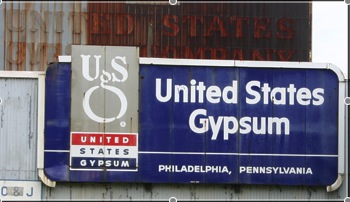
U.S. Gypsum, 1929-1991, demolished 2007.
South of 56th Street, west of the Schuylkill River to Eastwick Avenue, Philadelphia PA
Compiled by Sean McDonnell,
Oct. 2007.
The 1920s was a period of
rapid growth for the United States Gypsum Company, who
constructed several new facilities throughout the
country.[1] In 1929, they began building a plant in
southwest Philadelphia on land formerly owned by the Gulf
Oil Company.
Bordered on the north by 56th St, the south by Gulf Oil,
and the west by the Philadelphia and Reading Railway
(which provided rail service), the plant appeared to rely
on the Schuylkill River for delivery of inbound raw
materials. The plant was originally configured to produce
Sheetrock, the company’s name for gypsum wallboard,
and gypsum block, known as Pyrobar. The company’s
own Pyrobar could actually be found throughout the plant.
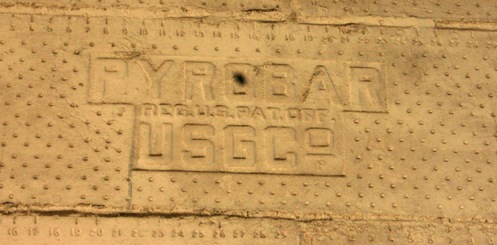
Photo of a Pyrobar
block, part of a wall in a room near the west end of
the calcining mill building. Though due to the age
of this particular structure, it is unlikely this
particular block was produced at the
plant.
Gypsum, chemically known as calcium sulfate, is a
naturally-occurring mineral. It is such a versatile
substance because it can be ground into powder , molded
into the desired shape, and be returned to its original
rock-like hardness simply by adding water. The gypsum is
first calcined to drive off water molecules that are part
of the compound, forming plaster. This plaster is mixed
with water and additives to form slurry. This slurry is
sandwiched between sheets of heavy paper to form the
gypsum board, which is then cut to the proper shape,
dried in a heater and prepared for shipping.[2]
It was a fine example of form following function in
industrial architecture and design, with varying
rooflines throughout the building to accommodate the
different production lines. The plant most likely got by
producing Pyrobar, and regular plaster, as a site plan
from the Factory Mutual Fire Insurance Company shows
portions of the plant were devoted to bagging and storage
of empty bags. The market for gypsum board did not
explode until World War II, when the need for a fast,
reliable building material finally allowed Sheetrock to
surpass plaster-on-lath as the preferred method for
finishing home interiors.[3]
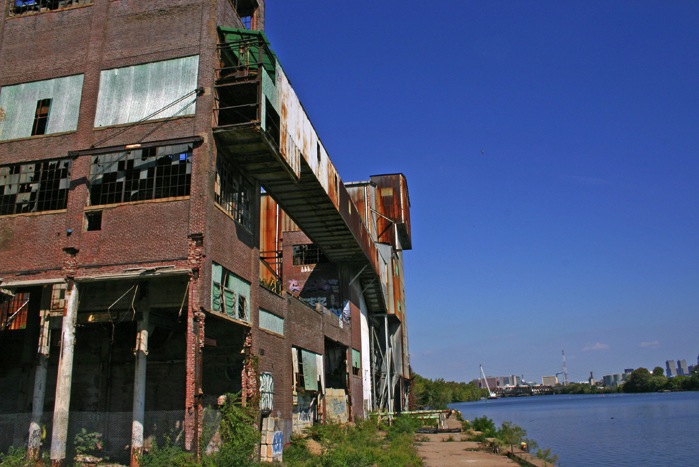
View northward
from the west bank of the Schuyklill, showing the bridge
that ran from the gypsum storage building to the
calcining mills. The green pipes extending towards the
waterfront were likely a pneumatic materials handling
system for unloading raw gypsum from ships or
barges.
The sheetrock business definitely grew for the plant, as
the fire insurance map shows additional manufacturing and
storage space for gypsum board was added to the plant in
1951, and again in 1960. By the time the fire insurance
survey was completed in 1980 by, the buildings housing
the gypsum block production lines had been demolished,
and went on to serve as the site for raw materials
storage. Between 1986 and 1991, US Gypsum sold the plant
to a company called Certified Concrete. Plant records
showed little activity dated after 1993, so that is
likely the year the plant closed for good. The facility
loomed silently on the west bank of the Schuylkill,
serving as shelter for squatters and as a playground for
urban explorers and photographers, until June of 2007
when it was leveled.
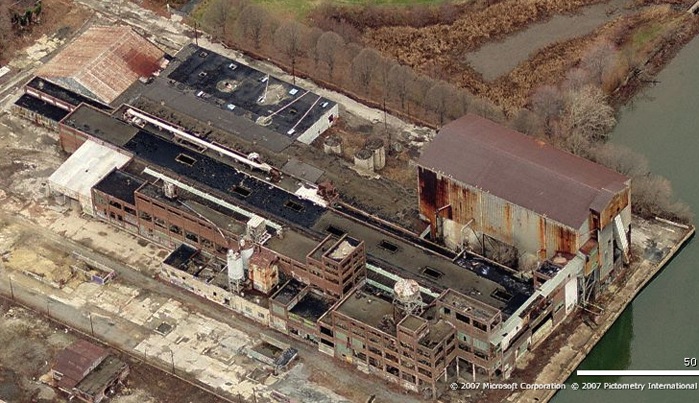
Aerial view, looking
north. The large corrugated-metal structure at the
center-right was originally storage for raw gypsum.
The long, two-story structure to the south was the
gypsum board production area. The structures to the
south of the gypsum board building housed kilns and
calcining mills to convert gypsum to its usable
form. This location allowed the processed plaster to
be delivered to the board production area, or to the
block production buildings, the concrete floors of
which are visible at the bottom of the
picture. 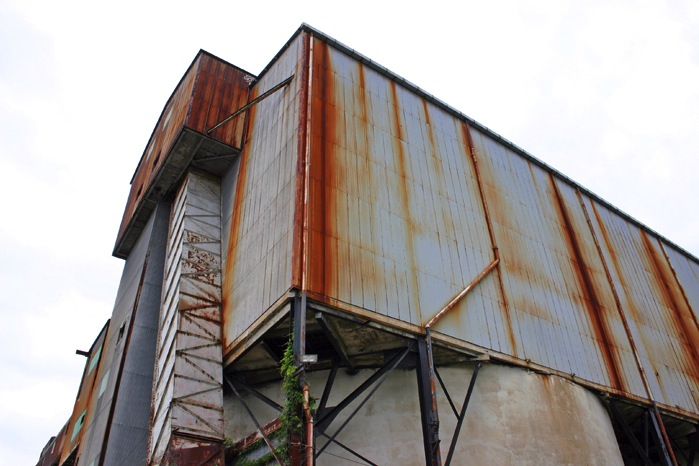
View looking southeast,
up at the gypsum storage building. The concrete
silos were roughly 4 stories tall, with the
remaining vertical space in the building occupied by
a large gantry crane with clamshell bucket to feed
the conveyor and auger. 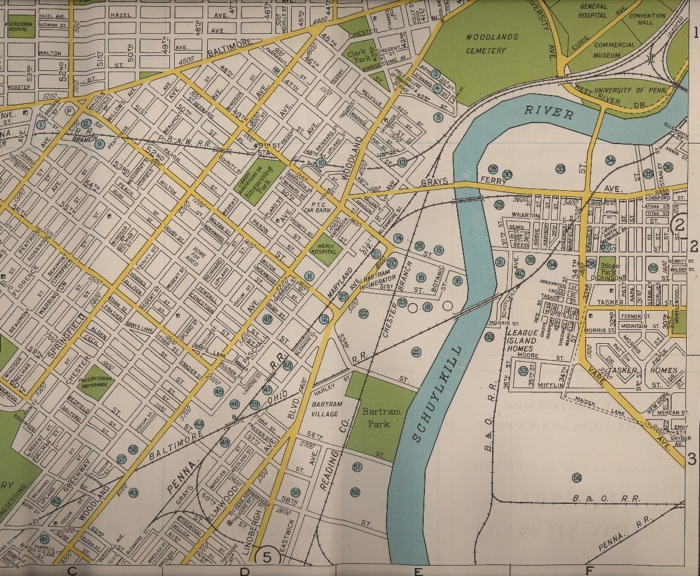
U.S. Gypsum is
#51, just below "Bartram Park", west of "Schuylkill."
Franklin's Street & Business Occupancy Atlas of
Philadelphia & Suburbs, 1946, detail Map No.
6.
FOOTNOTES:
1. History & Innovations of the United
States Gypsum Co.
2. Drywall - How It Is
Made.
3. Drywall - From 1916 to
today.
ALSO:
Audio-visual history of gypsum and gypsum
products.
USG Corporation website.